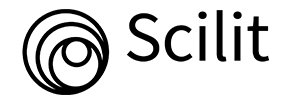
Journal Basic Info
- Impact Factor: 1.989**
- H-Index: 6
- ISSN: 2637-4625
- DOI: 10.25107/2637-4625
Major Scope
- Cardiovascular Surgery
- General Surgery
- Breast Surgery
- Ophthalmology
- Obstetrics & Gynecology
- Endocrine Surgery
- Pediatric Surgery
- Hand Surgery
Abstract
Citation: World J Surg Surg Res. 2019;2(1):1155.DOI: 10.25107/2637-4625.1155
Phenol Treatment for Pilonidal Sinus: Systematic Review
Mohammad Alharbi* and Hasnaa Abdullah Mujled
Department of General Surgery, Imam University, Riyadh, Saudi Arabia Health Services, Imam Mohammed Ibn Saud Islamic University, Saudi Arabia
*Correspondance to: Mohammad Alharbi
PDF Full Text Research Article | Open Access
Abstract:
Background: Pilonidal sinus is common disease, multiple surgical options are well known, yet patients are still looking for the least invasive, lowest recurrence rate, faster healing, and the option that may be the least costly. Phenol application provides similar goals. Aim: To assess phenol`s (crystals, solution) efficacy and as the least invasive intervention, with a faster return to normal life. Materials: This systematic review has been performed through PubMed, Medline and Scopus Search to look for phenol utilization ( crystals, solutions) in treatment of pilonidal sinus using keywords (phenol and pilonidal) with healing rate, recurrence, complication, and hospital stay, using Prisma guidelines. Results: A total of 38 articles met the inclusion criteria. Only 22 studies showed a significant findings which would help in estimating the complication, recurrence rate, and healing time with accessible full text. A total of 1,300 patients met the inclusion criteria. The mean age is 30.3, average recurrence rate is 12.5, and average complication rate 9.5%, average healing time is 4.4 weeks. Conclusion: Phenol treatment is a feasible treatment for pilonidal sinus with competitive less complications and a l
Keywords:
Pilonidal; Phenol; Sinus
Cite the Article:
Alharbi M, Mujled HA. Phenol Treatment for Pilonidal Sinus: Systematic Review. World J Surg Surgical Res. 2019; 2: 1155..













